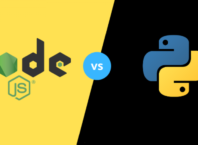Design thinking refers to the process that an idea goes through until a realization is reached. While this process is used in several different fields of design, it can be applied to website design in order to achieve the goal of success. The process is able to help designers solve certain problems that other design process methods simply cannot. Through this method, website designers are enabled to focus on solving the problems of the user rather than focusing all their efforts on the visual appeal of the website. When it comes to web design, TOLS Multimedia is well placed to help businesses.
Contents [show]
Design Thinking Explained
This process is used in order to achieve an understanding of the user and certain challenges that they may face. It encourages designers to focus on creating alternative strategies to solve user problems that would not otherwise be noticed. The process will allow designers to identify and solve these challenges. However, design thinking is the combination of a process and a certain set of tools that allow innovative ideas to be brought to life to ensure that the user’s desires are met. In order to optimize the user’s experience, website designers need to learn how to get started with design thinking in order to take advantage of the process that will essentially ensure their creations are user-friendly and successful.
The Five Significant Stages Of The Process Of Design Thinking
This process relies on five significant stages to reach a viable realization that will benefit the goal of the website. Each stage in the process is reliant on the findings from the previous stage. The process is based purely on discovering user solutions as a user-centric method of creating a successful website.
1Empathize
In the first stage of design thinking, the use of empathy is required to identify the people that will make up the target audience. This stage will involve discovering what the target audience values, what they may want, and how they would view the world. The challenge of this stage for the designer is to empathize with the target audience and incorporate their findings within the context of their design.
2Define
In the second stage of design thinking, designers will need to define their findings. This will require the designers to pose certain notable questions that will reveal the entire purpose of the website. These questions are crucial for determining the exact intended target audience and the websites function.
3Generate Ideas
During this stage of the process, designers can begin generating ideas as they would have already established a suitable base of limitations that will ensure the website is able to suit the target users. This stage encourages designers to identify user problems and identify suitable solutions.
4Creating A Prototype
The fourth stage consists of the creation of a prototype based on the conclusive findings of the previous three stages. A prototype can also be referred to as a demo or a test model. The user should be able to engage with the prototype.
5Test Stage
After you have successfully sent out the prototype, the test stage begins. During this stage of the process, designers are able to receive important feedback from users that will explain their experience with the prototype. The test stage allows designers to gain significant insight about the users that will result in relative feedback that will essentially ensure the final website is relatable.
Adding Experience To Web Design Projects
When web designers consider the importance of using the process of design thinking, essentially, this process will ensure that websites are designed to optimize the unique needs of the user’s. Without the use of this crucial process, designers risk the possibility of designing a website that is not suited to the desires of the target audience, which could render the website disappointing essentially. The process of identifying and solving the needs of the users is required for a successful website that user’s find personable and relatable. As a website is understandably a means of connecting with consumers, consumers will find a relatable website more attractive in comparison to a website that is merely visually appealing.
Designers are able to revisit the process of design thinking a number of times before they may reach a discovery that allows a prototype and test stage to provide successful feedback. As this process is used in several different fields of design, it has proved a significantly important process to determine a realistic and suitable outcome that will ensure the end result is a success.












